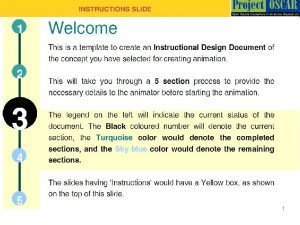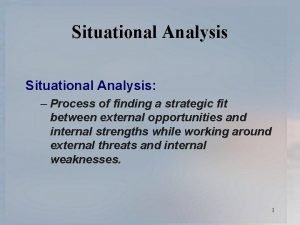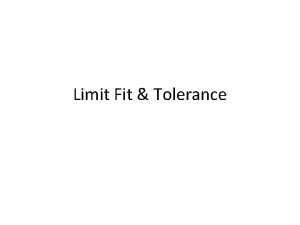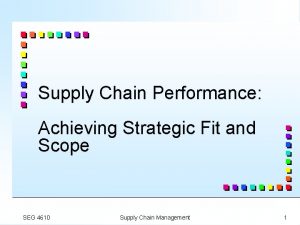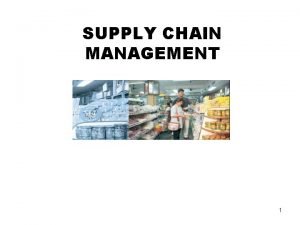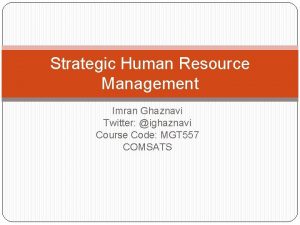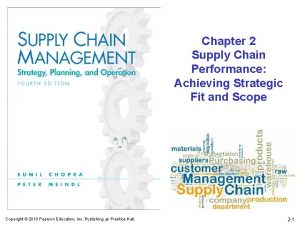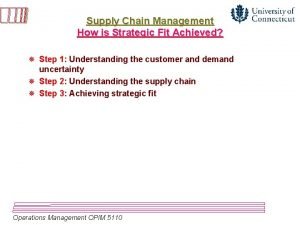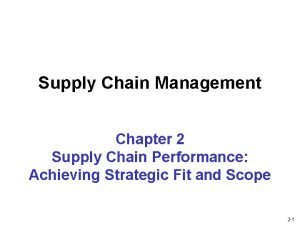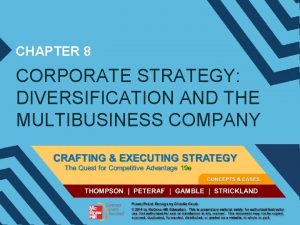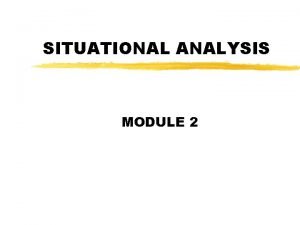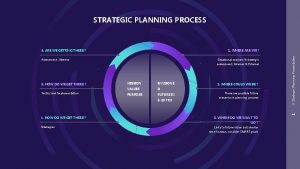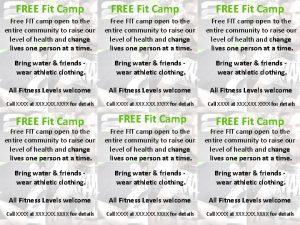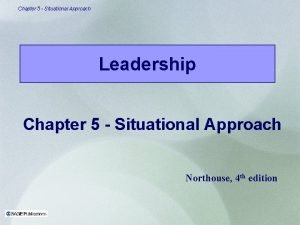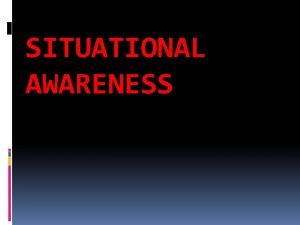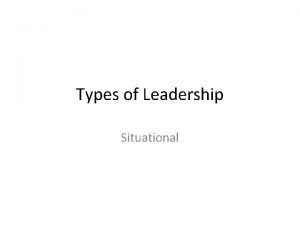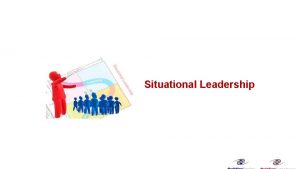Situational Analysis Process of finding a strategic fit















- Slides: 15

Situational Analysis: – Process of finding a strategic fit between external opportunities and internal strengths while working around external threats and internal weaknesses. 1

TOWS Matrix 2

Resource-Based Approach Resource: An asset, competency, process, skill, or knowledge controlled by the corporation. 3

Competitive Strategy Industry Structure: – Fragmented Industry • Many small and medium-sized local companies compete for small shares of total market – Focus strategies predominate 4

Competitive Strategy Industry Structure: – Consolidated industry • Mature industry dominated by a few large companies – Cost Leadership or Differentiation predominate 5

Dimensions of Quality Dimensions Quality • • Performance Features Reliability Conformance Durability Serviceability Aesthetics Perceived Quality 6

Competitive Strategy Strategic rollup: – Quickly consolidate fragmented industry – Money from venture capital – Entrepreneur acquires hundreds of owner-operated firms – Creates large firm with economies of scale 7

Competitive Strategy Strategic rollup: – Differ from Conventional M&A’s • Large number of firms • Owner-operated firms • Goal to reinvent entire industry 8

Competitive Tactics Tactic: – Specific operating plan detailing how a strategy is to be implemented in terms of when and where it is to be put into action. • Timing tactics • Market location tactics 9

Competitive Tactics Timing Tactics: – First mover (pioneer) • Reputation as industry leader • High profits • Sets standards for subsequent products in the industry – Late mover • Able to imitate technological advances of others – Keeps R&D costs down – Keeps risks down 10

Competitive Tactics Market Location Tactics: – Offensive Tactics • • • Frontal assault Flanking maneuver Bypass attack Encirclement Guerrilla warfare 11

Competitive Tactics Market Location Tactics: – Defensive Tactics • Raise structural barriers • Increase expected retaliation • Lower the inducement for attack 12

Cooperative Strategies: – Collusion • Active cooperation of firms to reduce output and raise prices – Explicit – Tacit 13

Cooperative Strategies: – Strategic Alliance: – Partnership of two or more corporations or business units to achieve strategically significant objectives that are mutually beneficial. 14

Cooperative Strategies Obtain technology Access to markets Strategic Alliance Reduce financial risk Reduce political risk Achieve competitive advantage 15
 Next fit memory allocation
Next fit memory allocation Memory allocation policy
Memory allocation policy Strategic fit vs strategic intent
Strategic fit vs strategic intent Strategic fit test
Strategic fit test Clearance fit tolerance
Clearance fit tolerance Person-job fit and person-organization fit
Person-job fit and person-organization fit Finding a good fit book
Finding a good fit book Analysing the 6 strategic options megxit
Analysing the 6 strategic options megxit Strategic fit means
Strategic fit means Supply chain upstream and downstream
Supply chain upstream and downstream Strategic fit means
Strategic fit means Startegic fit
Startegic fit Bifm level 5
Bifm level 5 Supply chain strategic fit
Supply chain strategic fit Strategic fit
Strategic fit Retrenching to a narrower diversification base
Retrenching to a narrower diversification base
